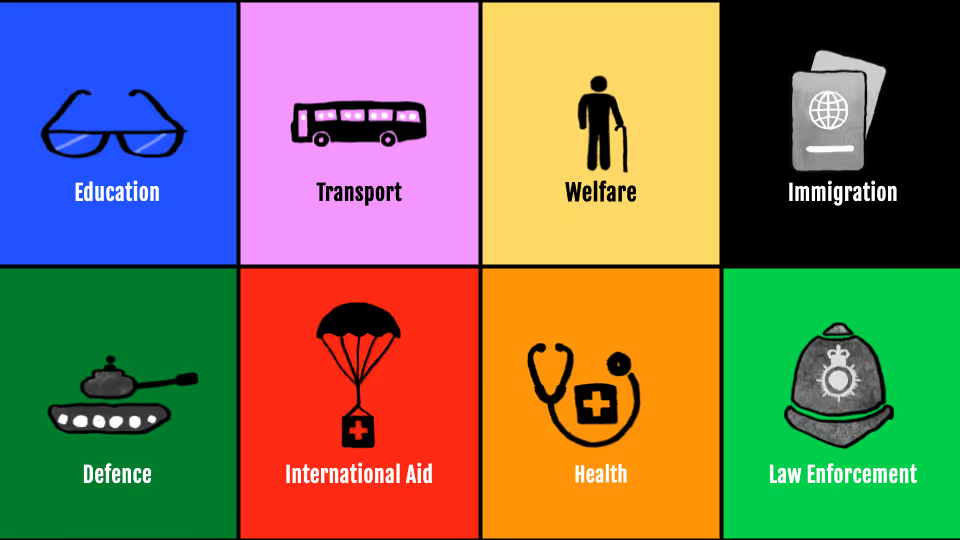



OLD 8.3 Explore: Making a Decision
Making a Decision helps young people explore how governments set priorities and how difficult it can be to balance competing needs. It simulates the challenges of public decision-making and encourages teamwork, debate and compromise.
This activity sits within the Explore phase of the Explore – Understand – Prepare – Engage model.
How it works:
Introduce the 8 Areas of Government
Show young people the 8 categories of government responsibility (see slide image):
- Education – Schools, colleges, universities and lifelong learning
- Transport – Roads, buses, trains, and public infrastructure
- Welfare – Support for people in financial need, including pensions and benefits
- Immigration – Border controls, visas, refugee policy
- Defence – The armed forces and military spending
- International Aid – Money and support provided to other countries
- Health – NHS services, hospitals, and public health
- Law Enforcement – Police services, crime prevention, and public safety
Take time to define and explain each area with the group.

Pairs
Put young people into pairs and give them a set of the 8 category cards (or write them up).
Ask each pair to discuss and rank the areas from most to least important.
Encourage open debate and reasoning behind choices.
Groups of 4
Join two pairs together to form a group of four.
The new group must combine their two lists into a single, agreed ranking.
They will need to discuss, compromise, and defend their choices to each other.
Keep Combining
You can keep expanding the groups if you wish – for example:
- Groups of 4 merge into groups of 8
- Or continue until the whole room agrees on one final list
This works well as a whole-room simulation of real decision-making and negotiation.
Debrief and Reflect
Once the game ends, lead a discussion:
- Was it hard to compromise?
- Did anyone have to give up a strongly held view?
- How did people decide what was most important?
- How does this relate to the challenges governments face when setting budgets and priorities?
This activity helps young people understand that political decisions are often not about right or wrong – but about making difficult choices with limited resources.
Why it Works
Making a Decision allows young people to practise negotiation, debate and compromise in a safe space. It encourages empathy and shows how even within a small group, reaching consensus can be difficult – much like in real-life politics.




